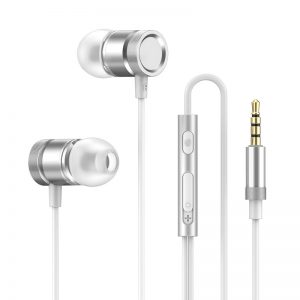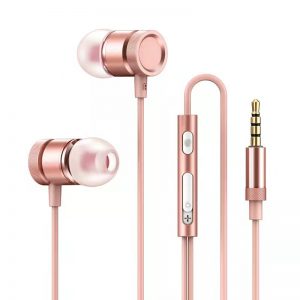There are countless manufacturers in China’s headset industry, especially in the surrounding areas of Shenzhen, there are hundreds of large and small Bluetooth headset manufacturers. The competition in the industry is fierce. In this social and economic environment, some headset manufacturers only seek short-term benefits, not long-term development. The quality of the product is not very good at the beginning, and the requirements for the various parts and assembly of the headset are not very high. .
There are too many products that use batteries. I counted the batteries in my home that day. The batteries installed in various toys, remote controls, portable devices, flashlights…, AA, AAA, lithium batteries, etc. There are more than 40, basically all of which are rechargeable batteries, which shows the popularity of rechargeable batteries.
Although rechargeable batteries are popular, many people lack understanding of batteries. Many people in the forum have serious misunderstandings about battery usage, resulting in battery life far less than the design time.
Wasting money is a trivial matter. China is a big country in battery production and consumption. This will also cause great pressure on the protection of our ecological environment.
I have done professional battery testing work for a period of time, here to exchange, I hope it will be useful to everyone:
A genuine rechargeable battery, whether it is a lithium battery or a nickel-metal hydride, is not difficult to achieve more than 500 cycles at present. For most low-power portable devices, charging is not frequent, and few people use more than the number of cycles. Naturally scrapped, because that may take many years. But in fact, it is often scrapped after less than a hundred cycles. What’s the reason?
I often say that the battery of my Walkman is used only a few times, but two sets of batteries are broken in a year. Others do not use it every day, indicating that my battery is of poor quality.
After I understood the details, I learned that it was caused by the wrong usage method, which has little to do with the quality of the battery: this user often hears falling asleep without electricity, and sometimes throws it away for 1 month before charging, and then finds to continue charging ….
in conclusion:
1. The vast majority of current rechargeable batteries (lithium, nickel-metal hydride) are not worn or charged, but “discharged”.
“Discharge” means over-discharge and empty storage. It is the enemy of lithium batteries and nickel-metal hydride batteries for storage and transportation of empty batteries, or charging them as soon as they are used up!
2. Some people always deliberately use clean electricity and recharge it, which is a serious mistake. It is a bad habit handed down in the nickel-cadmium era (nickel-cadmium batteries must be stored empty).
They are thinking about being afraid of memory effects, or wanting to fully use up the battery’s hundreds of cycles of life. In fact, Ni-MH has no memory effect. It only needs one deep charge and discharge at most 50 times. Lithium batteries have no memory effect at all. The number of cycles is not the number of recharges. If 50% of the charge is used up, 1,000 recharges are equal to 500 cycles. Use 25% (the remaining 75%) of charging, 2000 charging is equal to 500 cycles. Even for lithium batteries, there are more cycles of shallow charge and discharge than deep charge and discharge.
3. If the battery is not used for a long time, please be sure to fully charge it and store it at low temperature (70% power is better), or charge it regularly. The high temperature environment will quickly lose power and damage the battery.
The self-discharge of different batteries is quite different. In a room temperature of 25-30 degrees, a fully charged battery takes more than 3 months to discharge, but in an environment of 40 degrees or 50 degrees, such as putting it in a hot place in the car, it will not last for 1 month. It will lose power and damage the battery. Therefore, if the battery is not used for a long time, it is best to charge it regularly (at room temperature once every 3 months), or put it in a plastic bag in the refrigerator freezer (above 0 degrees), and it will not break for 1-3 years.
4. Different products have very different charging methods, and long-term charging is allowed only if there is a protection circuit and a full automatic stop function. Otherwise, the charging time must be strictly limited to avoid damage to the battery due to overcharge. Lithium batteries without a protective plate are strictly prohibited from overtime charging, which may cause an explosion.
In addition, if the ambient temperature around the charger exceeds 40 degrees, charging is prohibited.
5. Lithium batteries are strictly prohibited to be directly charged in series. You must bring a balanced charging protection board, and a separate protection board for each section is useless. Otherwise, after n cycles, the battery with a slightly lower capacity will quickly break down, dragging down the battery pack and quickly scrapping.
6. Don’t throw away used batteries, especially nickel-cadmium batteries. It is best to hand them to a professional collection point. One nickel-cadmium battery can pollute N acres of farmland. Due to serious environmental pollution, most countries have banned the production of nickel-cadmium batteries except China.
Also, don’t put the battery in the appliance for a long time to avoid leakage. Different batteries can’t be mixed…. I won’t talk about these common senses.
In fact, the characteristics of different types of batteries are quite different, which can not be explained clearly in the above few lines. If you want to know accurately, you need to consult the manufacturer’s technical description.
A simple voltage measurement method for judging the remaining capacity of a lithium battery (4.2V as an example):
4.20V—-100%
3.95V—-75%
3.85V—-50%
3.73V—-25%
3.50V—-5%
2.75V—-0%








